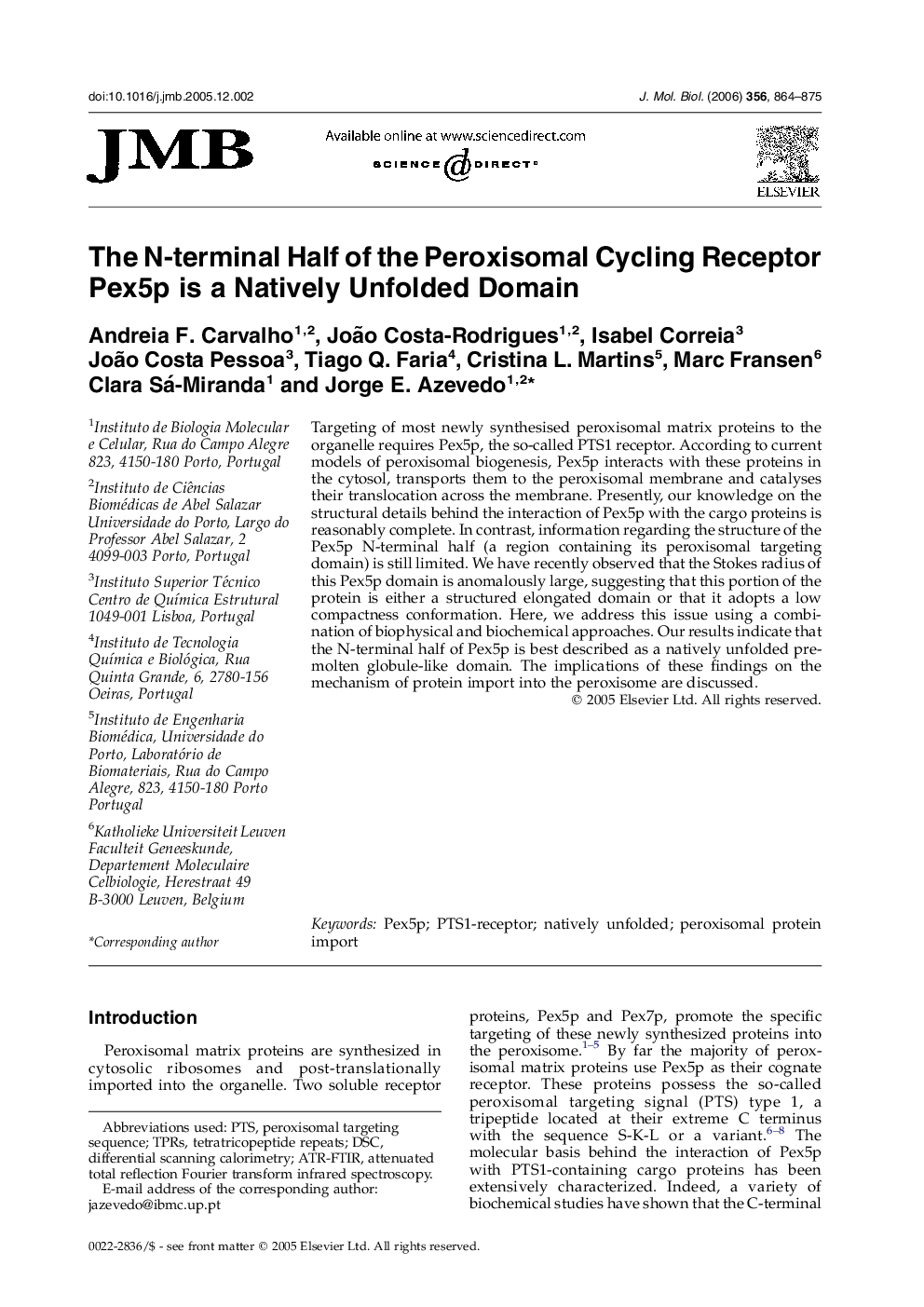| Article ID | Journal | Published Year | Pages | File Type |
|---|---|---|---|---|
| 2189879 | Journal of Molecular Biology | 2006 | 12 Pages |
Targeting of most newly synthesised peroxisomal matrix proteins to the organelle requires Pex5p, the so-called PTS1 receptor. According to current models of peroxisomal biogenesis, Pex5p interacts with these proteins in the cytosol, transports them to the peroxisomal membrane and catalyses their translocation across the membrane. Presently, our knowledge on the structural details behind the interaction of Pex5p with the cargo proteins is reasonably complete. In contrast, information regarding the structure of the Pex5p N-terminal half (a region containing its peroxisomal targeting domain) is still limited. We have recently observed that the Stokes radius of this Pex5p domain is anomalously large, suggesting that this portion of the protein is either a structured elongated domain or that it adopts a low compactness conformation. Here, we address this issue using a combination of biophysical and biochemical approaches. Our results indicate that the N-terminal half of Pex5p is best described as a natively unfolded pre-molten globule-like domain. The implications of these findings on the mechanism of protein import into the peroxisome are discussed.
